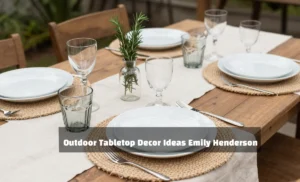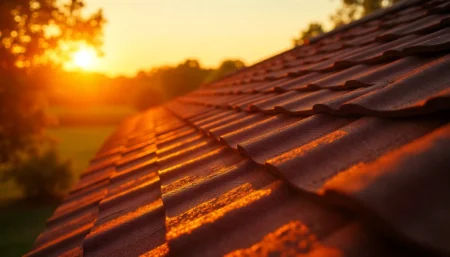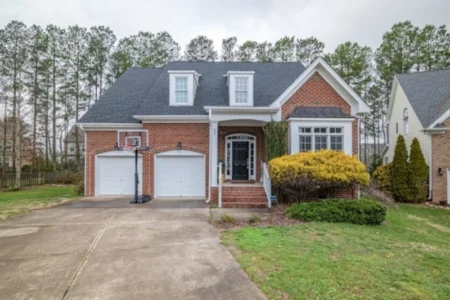Have you ever looked up at a roof and wondered about the science behind its color? The color of a metal roof is not just for aesthetics. It plays a crucial role in the efficiency and functionality of the entire structure. Your roof’s color directly affects how much heat your home absorbs. In warmer climates, lighter colors can make your home significantly cooler, saving you money on air conditioning. But what about colder areas? Don’t worry, Ottawa Metal Roofs stands at the forefront of finding the perfect balance of efficiency and style for your home.
In this article, let’s explore the science behind metal roof colors and see how to make the most energy-efficient decision for your home.
How Roof Color Impacts Energy Efficiency
The color of your roof has a surprisingly significant impact on the energy efficiency of your home. The physics of light and heat absorption mean your roof color directly influences how much solar energy your home retains. Understanding this relationship is crucial for making informed decisions that affect both comfort and long-term energy costs.
Solar Reflectance: Light-colored roofs boast a high solar reflectance. This means they reflect a larger portion of the sun’s rays, including both visible light and infrared radiation heat. By reflecting rather than absorbing this heat, lighter roofs stay cooler, which translates into a cooler home and reduces strain on your air conditioning system.
Thermal Emittance: Thermal emittance is the roof’s ability to release absorbed heat. Roofs with high thermal emittance can radiate absorbed heat back into the atmosphere, further contributing to their cooling effect.
Climate Considerations: It’s crucial to choose a roof color that matches your climate. For hot climates, light colors with high solar reflectance and emittance are ideal for minimizing heat absorption and maximizing cooling efficiency. On the other hand, darker colors can be beneficial in colder climates, as they absorb more heat from the sun and can contribute to keeping your home warmer.
Impact on Indoor Temperature and Energy Consumption
The way your roof manages solar energy directly affects your home’s internal temperature. During hot weather, roofs with low solar reflectance and emittance absorb and retain a large amount of heat. This heat radiates downward, increasing attic temperatures and ultimately affecting indoor living spaces. As a result, your air conditioning system must work harder to maintain a comfortable interior temperature, leading to increased energy consumption and higher utility bills.
Conversely, roofs with high reflectance and emittance stay cooler, minimizing heat transfer into the home. This allows your air conditioning system to operate more efficiently, reducing energy usage and saving you money.
How to Choose a Metal Roof Color: A Guide to Balancing Style and Efficiency
Selecting the perfect color for your metal roof demands a multifaceted approach. While energy efficiency is a key factor, aesthetics, neighborhood considerations, climate, and personal taste all play pivotal roles in the decision-making process. Here’s a breakdown of essential factors to consider:
Home’s Style and Design
Modern homes: Modern architecture often lends itself beautifully to cooler, contemporary colors like grays, blacks, or finishes that emulate the look of bare metal. These shades emphasize sleek lines and minimalism.
Barns or farmhouses: For a classic farmhouse or barn aesthetic, consider traditional shades like white, dark gray, or red. These colors create a sense of rustic charm and time-tested simplicity.
Ranch homes: Ranch-style homes benefit from grounded, earthy tones like browns, grays, or whites. This color palette promotes a welcoming and cohesive look.
Spanish homes: To capture authentic Spanish architectural flair, opt for warm, bold colors like rust, red, or terracotta. These shades evoke a Mediterranean feel.
Victorian homes: Victorian homes shine with muted grays, copper colors, or other shades that highlight their intricate details and classic elegance.
Geographic Location and Climate
Forests and Mountains: Earthy and natural tones like browns, greens, and grays work exceptionally well in forest and mountain settings. These colors harmonize with the surrounding environment and create a visually stunning synergy. Lighter shades within these colors can still offer decent heat reflection during hotter months, while mid-tones provide a balance throughout the year.
Deserts and Plains: The goal in desert and plains climates is to maximize solar reflectance and minimize heat absorption. White roofs are the undisputed champions in this regard, reflecting a significant portion of the sun’s rays. Other extremely light tones like pale yellows, beiges, or very light grays, can also be effective.
Coastal and Tropical: Coastal and tropical homes allow for some playful experimentation with color. Light blues, turquoise, and marine-inspired hues reflect the coastal aesthetic. Light pastels offer moderate heat reflection while maintaining a vibrant look. Importantly, ensure the chosen metal roof system is specifically rated for coastal or hurricane-prone areas to ensure its durability in harsh weather conditions.
Neighborhood Aesthetics
While personal preference is important, considering your neighborhood’s prevailing aesthetic helps ensure your home blends seamlessly into the community. Here’s why it matters and how to approach it:
Visual Cohesion: A neighborhood with a cohesive color palette creates a sense of order and visual harmony. Choosing a roof color that complements the existing homes fosters a sense of community and maintains the overall aesthetic appeal of the area.
Avoiding Clashes: A bold, unconventional roof color choice may clash with surrounding homes and create visual discord. This can negatively impact not only your home’s curb appeal but also potentially the curb appeal of the entire neighborhood.
Resale Value: While not the primary consideration, keep in mind that a roof color that harmonizes with its surroundings can enhance the resale value of your home. Potential buyers are often drawn to homes that fit within the overall neighborhood aesthetic.
Personal Preference
The joy of owning a home is expressing your style. While the practical aspects are crucial, don’t hesitate to incorporate your color preferences. Utilize visualization tools, and color samples, or consult a roofing professional to picture how different options would look on your home and choose a color that speaks to you.
Conclusion
The most efficient color for a metal roof ultimately depends on various factors, such as climate, location, and personal preference. It is important to consider these factors when choosing the color of a metal roof to maximize energy efficiency and longevity. To make an informed decision, consult with roofing experts and consider the specific needs of your property before selecting the most efficient color for your metal roof. Remember, investing in the right color can lead to significant savings in energy costs and enhance the overall performance of your roof.




